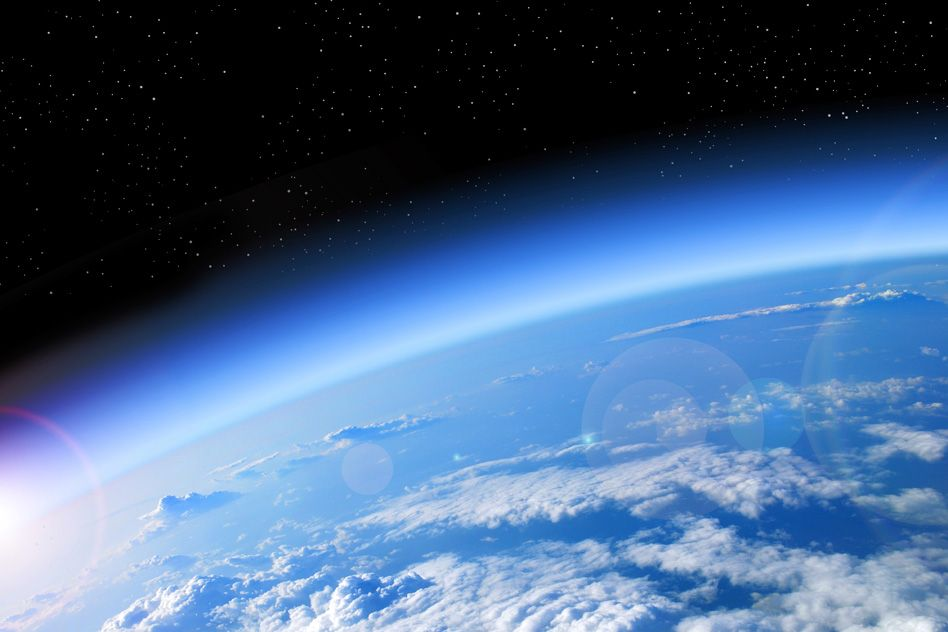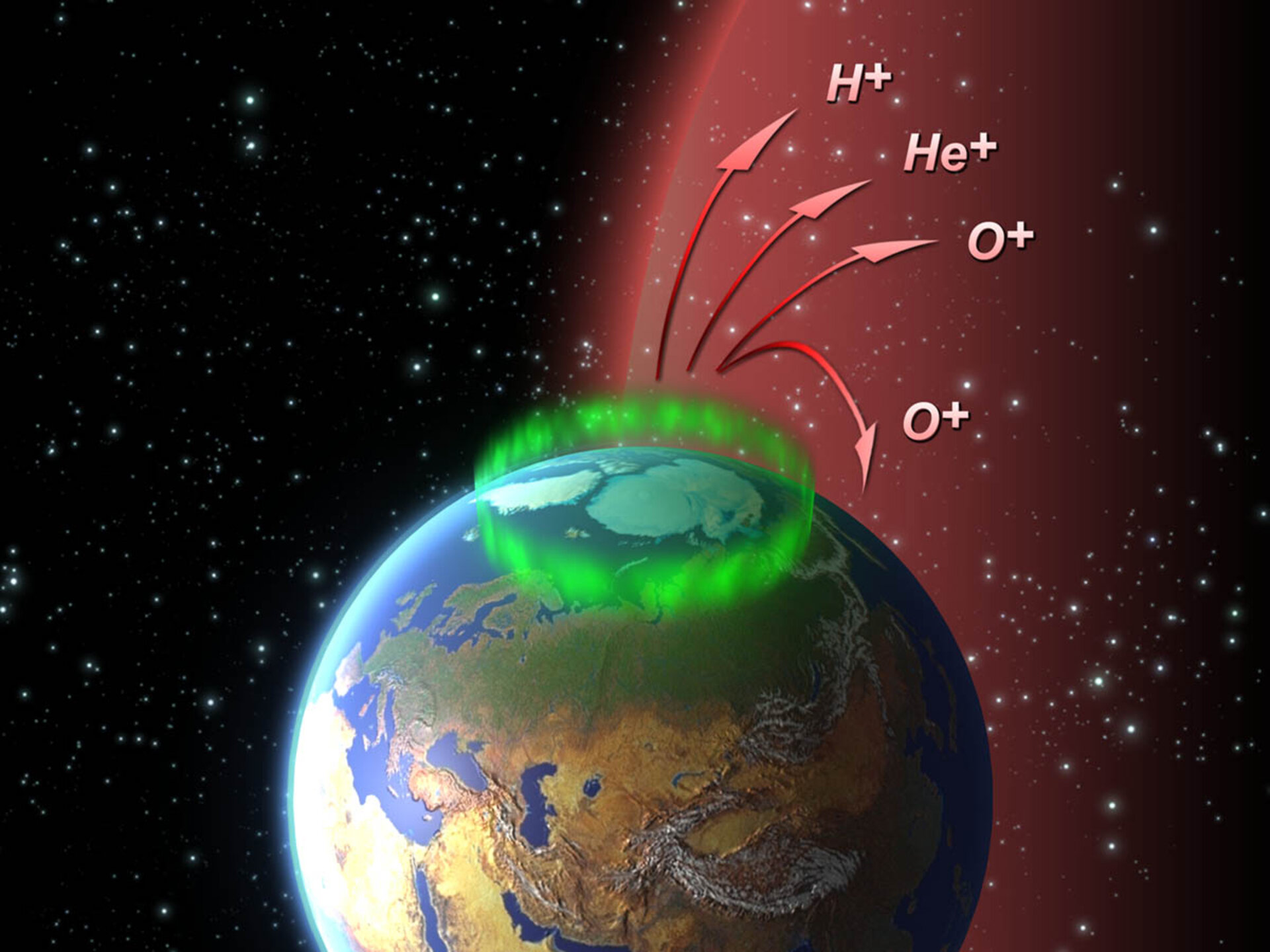
A recent study supported by NASA has projected a future for Earth that feels both surreal and chilling. The comforting idea that oxygen—so fundamental to our existence—will always be available has been challenged by scientific data predicting that Earth’s atmosphere will lose nearly all its oxygen, leaving complex life unable to survive. The study, published in Nature Geoscience, reveals how the Earth’s atmosphere, which has remained relatively stable for millions of years, is not a permanent state but a temporary phase in the planet’s long evolutionary timeline.
The research team used powerful climate and biogeochemical models to simulate the atmospheric changes that will occur over the next billion years. What they found is alarming: Earth’s oxygen-rich atmosphere will not last forever. The depletion of oxygen will be driven by solar activity and natural planetary feedback loops, ultimately reversing the Great Oxidation Event that first made advanced life possible on Earth. It is an eye-opening reminder that even the air we breathe is the result of delicate cosmic timing.
From the Great Oxidation to the Great Reversal
About 2.4 billion years ago, Earth underwent the Great Oxidation Event—a revolutionary period during which photosynthetic microorganisms, primarily cyanobacteria, started releasing oxygen as a byproduct of their metabolic processes. This event forever altered Earth’s atmosphere, paving the way for the rise of complex multicellular life, including plants, animals, and eventually humans.
However, the study warns of a “Great Reversal.” As the sun continues to age, it will become more luminous, gradually increasing surface temperatures on Earth. This warming will trigger chemical processes that reduce oxygen levels, such as enhanced weathering of silicate rocks and increased greenhouse gas accumulation. Over time, the oxygen in Earth’s atmosphere will decline to levels not seen since before multicellular life emerged, resulting in a world where only anaerobic and single-celled organisms can thrive.
The Role of the Sun in Earth’s Atmospheric Collapse
Solar evolution plays a pivotal role in the eventual collapse of Earth’s breathable atmosphere. The sun, currently about 4.6 billion years old, is roughly halfway through its main-sequence life. As it ages, it will burn hotter and brighter. This increased solar output will heat Earth’s surface and affect the biosphere in irreversible ways.
The study’s models suggest that within one billion years, the rising temperatures will break down carbon dioxide through a process called “photo-dissociation,” stripping it from the atmosphere and weakening the ability of plants to perform photosynthesis. Without photosynthesis, oxygen production halts. Simultaneously, the warming will intensify weathering processes that lock oxygen away in rocks, further depleting its presence in the atmosphere.
These processes will eventually tip the balance, leading to a rapid and catastrophic oxygen collapse. The models indicate this decline could happen over just 10,000 years—a mere blink in geological time. During this span, Earth’s atmosphere will change from one that supports a wide array of life to one that resembles the inhospitable conditions of the Archaean eon.
Complex Life’s Expiration Date Is on the Horizon
The implications of this study are profound for any complex organisms dependent on oxygen. Humans, mammals, birds, fish, and most known animal species require oxygen to convert food into energy. Once oxygen levels drop below survivable thresholds, these life forms will begin to vanish. The extinction cascade will start with large terrestrial animals, followed by marine species and finally, even insects and microbes that rely on oxygen will disappear.
The collapse of photosynthesis will also lead to the death of plant life. Forests will die off, turning landscapes into barren stretches. Oceans, stripped of oxygen, will turn into microbial soup. Earth, once teeming with biodiversity, will revert to a microbial state similar to its early life conditions.
Why This Matters to Astrobiologists and Planet Hunters
While this dramatic shift won’t occur for another billion years, the findings are already impacting how scientists search for life elsewhere in the universe. For decades, the presence of oxygen in an exoplanet’s atmosphere has been considered a key biosignature—an indicator that life may exist. However, this study suggests that oxygen might be present only during a narrow window of a planet’s life cycle.
As such, astrobiologists now realize that the absence of oxygen doesn’t necessarily mean the absence of life. Life could exist in forms we do not yet recognize, possibly thriving under conditions very different from Earth’s present state. This insight broadens the scope of planetary habitability criteria and forces the scientific community to refine the indicators used to detect alien biospheres.
This research adds another layer of complexity to the already difficult task of identifying habitable worlds. A planet may have been habitable billions of years ago or might become so in the distant future. Catching it in its oxygen-rich phase may be rare, especially if that phase only lasts a fraction of its total lifetime.
No Immediate Threat, but Timely Reflections
It’s crucial to remember that this event is expected to happen in about a billion years—a timescale far beyond human civilization or even humanity’s probable existence. This isn’t a doomsday clock ticking down to the next century or millennium. But it is a reminder of the impermanence of Earth’s habitability.
That said, the study has significant implications for how we understand Earth’s climate today. While the natural processes described in the research unfold over immense timescales, human activity is already altering the atmosphere at an alarming pace. Deforestation, fossil fuel combustion, and industrial pollution have changed the composition of the atmosphere more drastically in a few hundred years than nature has in millions.
Though different in origin, these human-driven changes also impact oxygen levels, biodiversity, and the stability of ecosystems. The slow oxygen loss projected by the NASA-backed study acts as a future mirror to the rapid degradation we’re seeing now. In both cases, a key takeaway is that atmospheric stability is not guaranteed. It is a dynamic, ever-changing system that must be nurtured.
Human Impact on the Atmosphere Is Already Tangible

Even if oxygen loss won’t affect us for another billion years, human activity is having measurable effects on atmospheric oxygen today. While these losses are not yet catastrophic, they are noticeable. Studies show that atmospheric oxygen levels have been declining slightly over the past few decades, mainly due to fossil fuel combustion, which consumes oxygen and releases carbon dioxide.
Although this current trend isn’t dangerous yet, it serves as a stark indicator of how our technological advancement is impacting planetary systems. What nature takes billions of years to do, humans are accelerating in centuries. Climate change, acidification, pollution, and species extinction are all interconnected facets of this shift.
The notion that oxygen could vanish entirely from our atmosphere may seem like science fiction, but smaller-scale versions of that future are already unfolding—especially in our oceans. Oxygen-depleted “dead zones” are growing rapidly, disrupting marine ecosystems and fisheries. The future predicted by the NASA-supported study is not so different from what human actions are already previewing on a smaller scale.
Philosophical Questions About Life’s Fragility
Beyond the scientific ramifications, this study raises deep philosophical questions. What does it mean to live on a planet with an expiration date? How should our civilizations respond to the knowledge that Earth’s life-support systems are not eternal?
Some may see this as disheartening—a confirmation that all things, even the most life-rich planets, come to an end. But others may find empowerment in this knowledge. If Earth’s oxygen will not last forever, perhaps that gives our time here greater meaning. It encourages responsible stewardship of the environment and deeper respect for the fragile systems that sustain life.
From a cosmic perspective, it also challenges us to think beyond Earth. If life here is finite, the human species must consider how it can adapt, survive, or migrate. Projects like Mars colonization, asteroid mining, and exoplanet exploration take on new significance when viewed through the lens of planetary mortality.
The Long Goodbye of Earth’s Biosphere
When we picture Earth’s future, we often imagine technological marvels, space travel, or even utopian societies. Rarely do we consider the natural systems that might quietly, slowly fail beneath our feet. Yet this study invites us to look at the planet not as a permanent paradise but as a living, evolving entity with a life span.
In a billion years, Earth may look nothing like the vibrant blue orb we know. The sky may no longer be blue but hazy or orange due to changing atmospheric composition. The seas may turn brown or green with microbial blooms. Land, once carpeted in green forests, may transform into deserts or rock fields. Human monuments—if they last that long—will be surrounded not by life, but silence.
The legacy of Earth, however, won’t be its death. It will be the miracle of life it once hosted—the complex organisms, civilizations, cultures, and wonders that evolved here. That legacy should drive us to preserve what we have today for as long as possible.
An Urgent Reminder Disguised as a Distant Warning
While the oxygen collapse is far in the future, the themes it underscores are pressing. Atmospheric stability, ecological balance, and the search for life in the universe are not abstract concepts. They are vital, present-day concerns. The loss of oxygen may be a billion years away, but its echo can already be felt in the rising temperatures, deforestation, and climate crises of today.
As stewards of a planet with a known endpoint, we must act with awareness, humility, and responsibility. We may not be able to stop the sun from heating or the eventual breakdown of the biosphere, but we can extend the livable lifespan of Earth through science, policy, innovation, and conservation.
Conclusion: A Billion-Year Warning, a Present-Day Call to Action
The NASA-backed study forecasting Earth’s atmospheric oxygen collapse is a billion-year early warning—a message written in the language of data, models, and cosmic foresight. It tells a story of cycles, of creation and destruction, of change as the only constant.
It also tells us this: the time we have is rare and extraordinary. We are living in a golden window of planetary history, one that won’t last forever. Knowing that, we must treat our atmosphere, our ecosystems, and each other with the respect and urgency they deserve.
The skies are still blue, the forests still breathe, and oceans still support life. But they won’t do so forever. The question is: what will we do with the time we have left?

